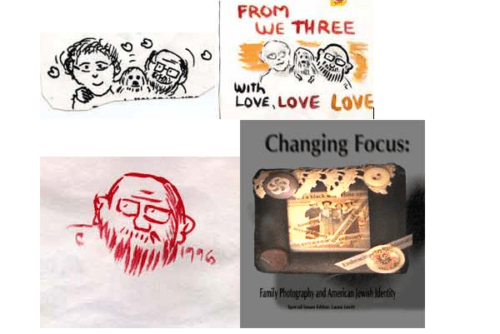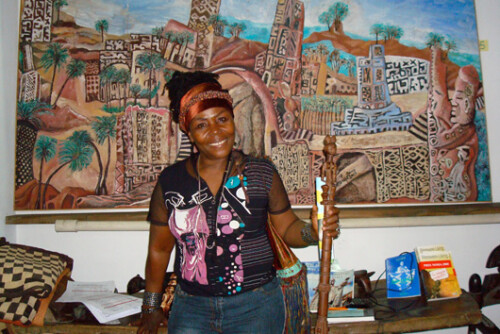Other normative problems are raised by the way in which reproduction policing occurs in the United States. Chief among these implications is the distributional unevenness in prosecutions among racial groups. These impacts are unintended, but nevertheless real. For example, black women are more likely to be overrepresented in the prosecution of fetal abusers. As a matter of social policy, such an outcome is one that should be avoided. First among the reasons to avoid the overrepresentation and over-identification of black women as fetal abusers is that black women are more likely to be reported for illicit drug use, but according to the Centers for Disease Control, black women are actually less likely than white women to use illicit drugs like alcohol and cigarettes during pregnancies.1 Over-policing black women’s reproduction will likely have other unintended social consequences, including fostering the perception that black women are less caring mothers, and are more likely to abuse drugs than white women.
Highlighting the race pitfalls of FDL prosecutions brings to light other problems, especially the faulty science that prosecutors rely upon. Prosecutors make scientifically inaccurate claims with FDLs, suggesting a pregnant woman’s drug addiction is what causes miscarriages and stillbirths. The emotional power of that type of rhetoric can be persuasive, but incomplete. For example, black women experience higher rates of stillbirths absent any drug use. A 2003 study conducted by the Centers for Disease Control found that between 1990 and 2003 fetal mortality was on the decline, however the fetal mortality rate for black women persisted and was double that experienced by white women.2 Therefore, a black drug addict’s miscarriage could be a false positive for fetal death with a drug related cause. Dr. Marian MacDorman, the study’s lead author, reminds us that science is inconclusive about what causes fetal mortality.3 However, contributing factors can be smoking, maternal obesity, high blood pressure, hypertension, and diabetes.3 But are we to police these behaviors and health conditions too?
More importantly, the racial disparities resulting from fetal harm policing will result in a new social class: black children being raised in foster care with mothers in prison. The problem with fostering this type of social condition extends beyond the immediate families involved. This issue implicates state resources, as the consequences are not limited to social stigma, but rather, as data suggests, that children of incarcerated mothers are more likely to drop out of school and enter the criminal justice system.4 In a report produced by the California Research Bureau, Dr. Charlene Simmons warns that “the impact of a mother’s arrest and incarceration on a family is often more disruptive than that of a father’s arrest and incarceration … because approximately two-thirds of incarcerated mothers were the primary caregivers for at least one child before they were arrested.”5 An estimated 856,000 children in California have at least one parent in jail.6 About 80% of women in prison in California have at least two children.3
This essay describes some of the legislative and social pitfalls resulting from using sticks rather than carrots to address maternal-fetal health harms. This essay critiques whether FDLs achieve their goals, and whether those goals might be accomplished by less punitive approaches, such as the use of carrots: rehabilitation, counseling, and empathy, to deter illicit drug use among women. Ultimately, FDLs hold women to a different standard than men. And, within the gendered space, FDLs often place poor women at an even more vulnerable status. Because of these outcomes, the stick (criminal) approach to regulating women’s pregnancies lacks political rationality and leads to unjustifiable externalities in a civil society, and extra-legal punishments resulting in stigmatization, shame, humiliation, and stereotyping.
Video
Podcast
Listen using the player above or visit BCRW on iTunes to download or subscribe to BCRW’s podcasts.
Marginality and Exclusivity in ART Practices – Podcast Description
David Eng, Rayna Rapp, Faye Ginsburg and Michele Goodwin discuss “Marginality and Exclusivity in ART Practices” in this panel discussion moderated by Lesley Sharp. Increased demand for assisted reproductive technology (ART) and transnational adoption has been propelled by a number of factors, including the development of new technologies and changes in familial form – such as childrearing in second or third marriages; lesbian, gay, and transgendered families; and delays in childbearing and subsequent difficulties in conception – that make ART helpful. Other relevant factors include environmental changes that have negatively affected fertility levels, new levels of transnational migration and interaction that have fueled awareness of babies available for and in need of adoption, and concerns about genetic diseases and disabilities. Effectively, the various imperatives and the desires, both cultural and personal, that the use of ART fosters and responds to, have created a “baby business” that is largely unregulated and that raises a number of important social and ethical questions. Do these new technologies place women and children at risk? How should we respond ethically to the ability of these technologies to test for genetic illnesses? And how can we ensure that marginalized individuals, for example, people with disabilities, women of color, and low-income women, have equal access to these new technologies and adoption practices? And, similarly, how do we ensure that transnational surrogacy and adoption practices are not exploitative? These questions and many others on the global social, economic and political repercussions of these new forms of reproduction were the focus of this year’s Scholar and Feminist Conference, “The Politics of Reproduction: New Technologies of Life,” which took place on February 28, 2009 at Barnard College.
- Robert Mathias, “NIDA Survey Provides First National Data on Drug Use During Pregnancy,” National Institute on Drug Abuse. [↩]
- Centers for Disease Control, “New Study Shows Decline in Still Births; Racial Disparities Persist,” Center for Disease Control (2007). [↩]
- Ibid. [↩] [↩] [↩]
- Charlene Wear Simmons, “Children of Incarcerated Parents,” (PDF) California Research Bureau 73 (2000): 1. According to Dr. Wear Simmons, children whose parents have been arrested and incarcerated face unique difficulties. Many have experienced the trauma of sudden separation from their sole caregiver, and most are vulnerable to feelings of fear, anxiety, anger, sadness, depression and guilt. They may be moved from caretaker to caretaker. The behavioral consequences can be severe, absent positive intervention—emotional withdrawal, failure in school, delinquency, and risk of intergenerational incarceration. [↩]
- Ibid, 4. [↩]
- Ibid, 2: Stating that approximately 195,000 children currently have a parent in state prison. [↩]




